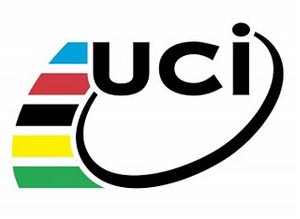“It was intended to be a two-pronged attack on doping: prevention both by dissuasion and repression.”
 Elaborating on his confirmation Tuesday that Lance Armstrong and other riders were given warnings over suspect test values, former UCI chief and current honorary president Hein Verbruggen has sought to present the tactic as a logical approach to preventing doping in the sport.
Elaborating on his confirmation Tuesday that Lance Armstrong and other riders were given warnings over suspect test values, former UCI chief and current honorary president Hein Verbruggen has sought to present the tactic as a logical approach to preventing doping in the sport.
“It used to be the UCI’s policy — and indeed also of other federations — to discuss atypical blood test results, or other test results, with the riders concerned,” the Dutchman stated in a communication supplied to The Associated Press.
“Riders who were doping (but who had yet to fail a test) were effectively warned that they were being watched and that they would be targeted in future with the aim of getting them to stop doping,” he said. “However, if the atypical test results were genuinely not caused by doping, the rider also had the opportunity to have a medical check.”
The publication VN.nl quoted Verbruggen on the matter on Tuesday, when the Dutchman first admitted that it was a UCI tactic. “Perhaps you convince them to stop using drugs, perhaps not,” he said.
The Dutch publication said that confidential documents illustrate that other top riders and team mangers were called to the UCI headquarters to be given warnings.
Verbruggen’s statement today said that he was not the one who called them in. “First, it was not Hein Verbruggen who contacted riders. Instead, it was the UCI’s medical advisers.”
He added that the policy came about “after some considerable debate and deliberation. Its purpose was to protect clean riders against competitors who might be doping, rather than to let those clean riders continue to be put at a disadvantage until such time that the drug cheats could be caught.
“It was intended to be a two-pronged attack on doping: prevention both by dissuasion and repression.”
Given Verbruggen’s statement plus the news that Armstrong was one of those warned, his and the UCI’s insistence that there were no suggestions that the rider had doped during his career is hard to stomach. In 2011 he dismissed the claims of drug use against the Texan. “That’s impossible, because there is nothing. I repeat once again:Lance Armstrong has never used doping,” he told AD.nl. “Never, never, never.”
Both he and current president Pat McQuaid have refused to accept any UCI responsibility for the fact that Armstrong was able to use large quantities of doping products for much of his career. They have sought to fault anti-doping labs and WADA for not being able to detect the banned substances; however if the Texan’s blood values were inconsistent enough to lead to a warning, this complete blame-shifting does not hold much credit.
Several US Postal Service riders have said that the team would start the Tour de France with hematocrits fractionally below the UCI’s upper limit of fifty percent. This should have made it clear that manipulation was occurring, and even more so when Armstrong’s racing values dropped lower when the biological passport was in place.
Despite that, though, Verbruggen made that insistence to AD.nl in 2011 that the American never doped. He has only recently changed his public stance, done so when the argument became indisputable.
The question remains if Armstrong should have been able to win those first Tours. French newspaper Le Monde published a doping control document from 1999 this week which related to his positive test for a corticosteroid. It showed that he had not declared himself to be taking any medication, but later changed his position after that positive test.
The UCI accepted this and did not punish him. However, as the website inrng.com pointed out yesterday, article 43 of the UCI’s own rules from 1999 is very clear on the issue.
“The rider must indicate on the form any drugs listed on the list of classes of doping substances and methods which he has taken but which may not be taken into consideration under the medical conditions specified in the same list. If he has not and any such substance is found by the laboratory, the test result shall be considered as positive and the rider shall be sanctioned even when he produces a medical certificate after the test.”
Under that rule, there is no room for manoeuver on the issue and Armstrong should have been out of that Tour and facing a ban.